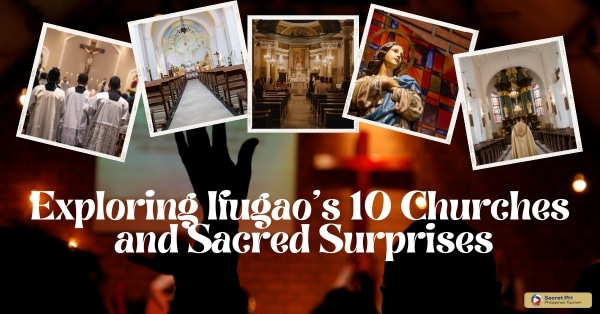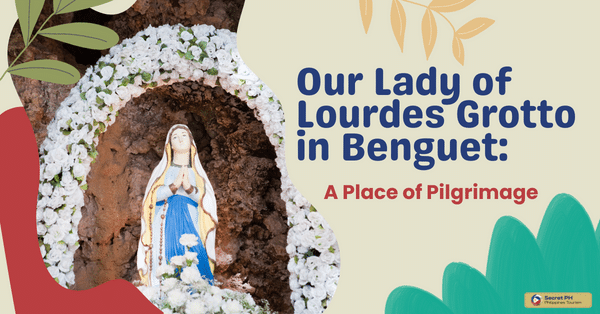The Our Lady of Atonement Cathedral in Baguio City, an architectural gem with Gothic Revival design and iconic bell towers, holds deep historical and religious significance. This century-old cathedral hosts religious services and continues restoration efforts to preserve its rich heritage, making it a must-visit destination atop Baguio Hill.
In this blog post, we will delve into the fascinating origins and features of this cathedral. As well as its importance to both local and international communities. Join us on this journey to discover the beauty and spiritual essence of Our Lady of Atonement Cathedral.
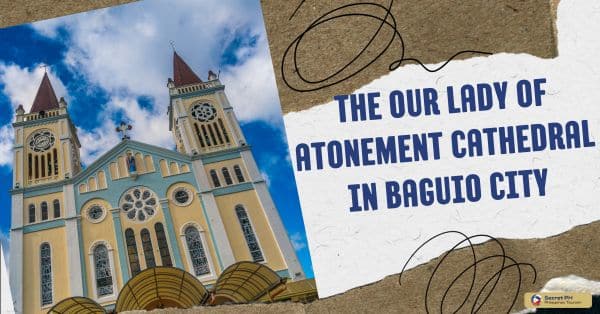
History and Origins of Our Lady of Atonement Cathedral
The history of the Our Lady of Atonement Cathedral in Baguio City is a tale of both faith and fortitude. Construction began in 1920, during the American colonial period, with the vision of creating a grand church that would serve the spiritual needs of the growing community in the region.
The cathedral, also known as the Baguio Cathedral, was officially consecrated in 1936. Stands as a testament to the determination of the people who believed in its construction despite the challenging terrain and limited resources. Its origins lie in the desire to provide a place of worship and a symbol of hope in a rapidly developing city nestled in the scenic Cordillera mountains.
The cathedral’s architecture, with its awe-inspiring Gothic Revival design, reflects the dedication of those who envisioned it. The cathedral’s construction materials were sourced from various parts of the Philippines, including stones from the local area and hardwood from the nearby provinces.
Over the years, it has become a significant cultural and religious landmark in Baguio City. Serves as a place of worship, a haven for spiritual reflection, and a focal point for various community events and festivals. Its history is deeply intertwined with the growth of the city, and it continues to stand as a symbol of faith and perseverance.
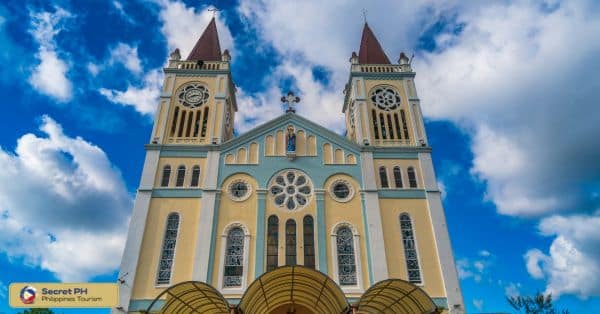
Architectural Design and Features
The architectural design of the Our Lady of Atonement Cathedral is a remarkable blend of Gothic Revival influences and indigenous craftsmanship. This iconic structure not only serves as a center of religious devotion but also stands as an architectural marvel in the Philippines.

Gothic Revival Influence
The cathedral’s design is a homage to the Gothic Revival architectural style, characterized by its soaring spires, pointed arches, and intricate tracery. The incorporation of these elements in a tropical setting is a testament to the adaptability and timelessness of this style.
Iconic Bell Towers
One of the most striking features of the cathedral is its twin bell towers that flank the entrance. These towers are adorned with pointed spires, and house bells that have rung for generations, announcing religious ceremonies and events in the city.
Stained Glass Windows
The cathedral’s interior is adorned with stunning stained glass windows that depict biblical scenes and religious figures. These colorful works of art not only allow natural light to filter in but also add to the spiritual ambiance of the space.
Altar and Interior Decor
The altar of Our Lady of Atonement Cathedral is a masterpiece of craftsmanship, featuring intricate carvings and religious iconography. The interior decor includes religious statues, intricate woodwork, and a magnificent crucifix that contribute to the spiritual experience of visitors.
Exterior Facade
The cathedral’s exterior facade is a testament to the architectural detail and precision that went into its construction. Stone walls, buttresses, and pointed arches are characteristic elements of the Gothic Revival style, and they lend an air of grandeur and timelessness to the structure.
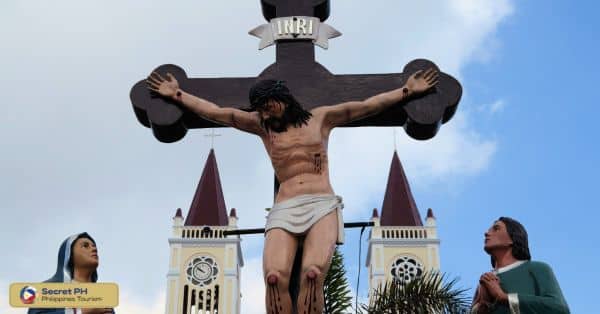
Religious Significance and Importance
The Our Lady of Atonement Cathedral holds profound religious significance and cultural importance in the heart of Baguio City. This iconic cathedral has been a spiritual cornerstone for the local community and a place of worship for generations.

Role as a Major Catholic Church
Our Lady of Atonement Cathedral is one of the major Catholic churches in Baguio City and serves as the mother church of the Roman Catholic Diocese of Baguio. It plays a central role in the spiritual life of the local Catholic community. Offering regular religious services, including Masses, sacraments, and special ceremonies.
Patron Saint and Devotions
The cathedral is dedicated to Our Lady of Atonement. The devotion to this patron saint is deeply ingrained in the community. Pilgrims and devotees come from near and far to seek solace and blessings. Making the cathedral a sacred destination for those in need of spiritual guidance and healing.
Religious Celebrations and Services
The cathedral hosts a multitude of religious events and celebrations throughout the year. From traditional religious holidays to special occasions like weddings, baptisms, and confirmations. It is a place where significant milestones in the faith journey of the community are marked and celebrated.
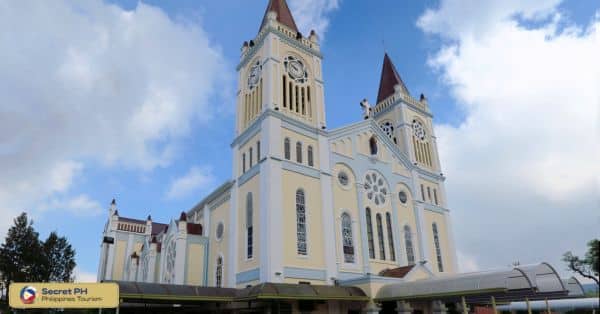
Restoration and Preservation Efforts
The Our Lady of Atonement Cathedral is not only a place of worship. It is also a living testament to the importance of restoration and preservation. Efforts to maintain and enhance this historic landmark are vital to ensure its longevity and continued significance.
1. Architectural Restoration– Ongoing efforts focus on restoring and preserving the cathedral’s architectural integrity. This includes repairing and maintaining the intricate stonework, stained glass windows, and wooden interiors that contribute to its grandeur.
2. Heritage Conservation– Preservation initiatives aim to safeguard the heritage value of the cathedral. This involves documenting its history, architecture, and cultural significance, as well as adhering to heritage conservation guidelines in any restoration work.
3. Environmental Sustainability– In recognition of environmental concerns, the cathedral has implemented eco-friendly practices. These include measures to reduce energy consumption, minimize waste, and maintain the natural surroundings of the cathedral.
4. Fundraising and Support– Community members, religious organizations, and interested parties contribute to fundraising campaigns to support restoration and preservation projects. Their financial assistance plays a pivotal role in ensuring the cathedral’s upkeep.
5. Preservation of Artifacts– Efforts are made to preserve and protect the cathedral’s religious artifacts, historical documents, and artworks. These treasures are essential for maintaining the cathedral’s historical and spiritual legacy.
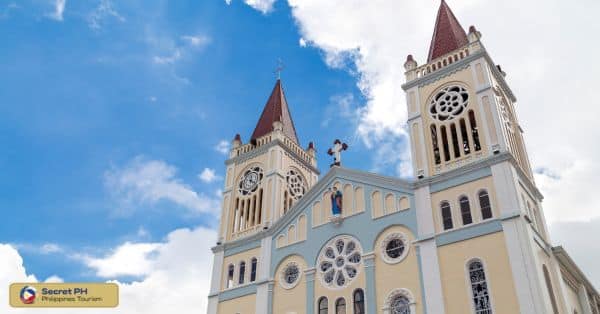
Visitor Information and Accessibility
For visitors to the Our Lady of Atonement Cathedral ensuring a pleasant and meaningful experience is essential. Understanding visitor information and accessibility options can help both pilgrims and tourists make the most of their visit to this iconic site.
Hours of Operation
- The cathedral typically opens its doors to visitors from early morning until evening, offering ample time for exploration and contemplation.
- Check for special hours during religious festivals and holidays, as the cathedral may have extended opening times for Masses and events.
Guided Tours
- Guided tours are available for those interested in learning about the cathedral’s history, architecture, and cultural significance.
- Knowledgeable guides provide insights into the cathedral’s features, religious practices, and the stories that surround it.
Location and Directions
- The cathedral is situated atop a hill, offering panoramic views of Baguio City. Visitors can easily access it by car, taxi, or public transportation.
- Detailed directions and GPS coordinates can be found online or obtained from local tourist information centers.
Accessibility for Visitors
- The cathedral is accessible to visitors with mobility challenges, with ramps and accessible entrances.
- Wheelchairs may be available for use upon request, ensuring that everyone can explore the cathedral comfortably.
Visitor Services
- The cathedral may offer visitor services, such as restrooms, a gift shop, and a place for quiet reflection.
- Information kiosks or friendly cathedral staff are often on hand to answer questions and provide assistance.

In conclusion
The Our Lady of Atonement Cathedral in Baguio City is not just a magnificent structure but also a living testament to the unwavering faith and determination of its builders. Its rich history, Gothic Revival design, and religious significance make it a must-visit destination for those seeking spiritual enlightenment and cultural appreciation.
Its ongoing restoration efforts are crucial in preserving this iconic landmark for future generations to experience and appreciate. We hope this blog post has inspired you to visit this beautiful cathedral and take part in its vibrant community.


